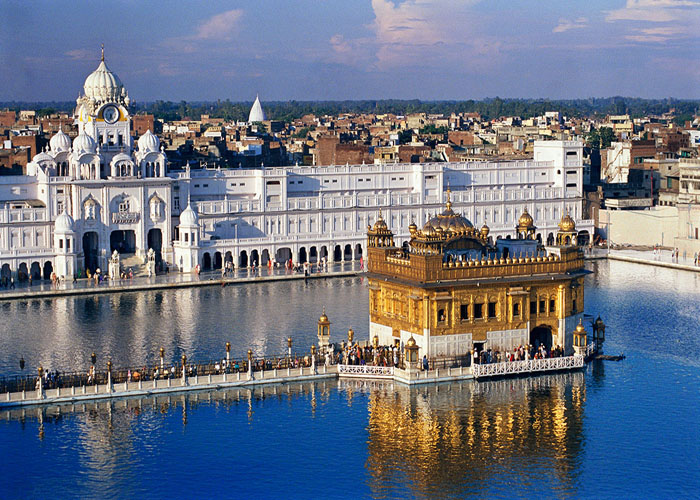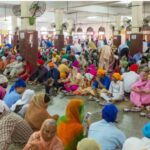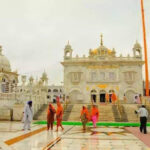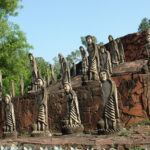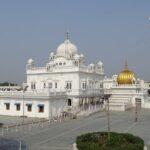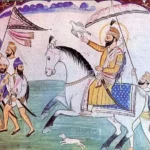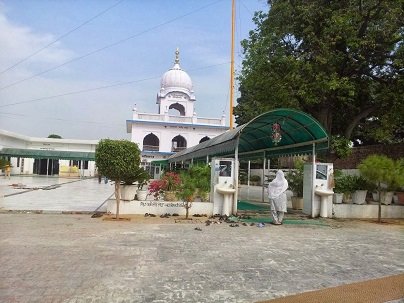Gurdwara Sri Guru Tegh Bahadur Sahib
This Gurdwara is a Sikh Gurdwara in Dhubri, India, on the banks of the Brahmaputra River. Guru Nanak Dev, the first Sikh guru, visited this location in 1505 AD and met Srimanta Sankardeva on his route from Dhaka to Assam. Later, in the 17th century, the 9th Guru Teg Bahadur arrived at this location and founded this Gurdwara. Every year in December, more than 50,000 Hindus, Sikhs, Muslims, and people of all religions gather in this historic shrine to commemorate Guru Tegh Bahadur’s martyrdom. The holiday begins with considerable pomp and ceremony on December 3rd. This festival is known as Sahidee-Guru-Parav by Sikhs.
Takhat Sri Patna Sahib,
Also known as Takhat Sri Harimandir Ji, Patna Sahib, is one of the five Sikh Takhats in Patna, Bihar, India. The Takhat was built in the 18th century by Maharaja Ranjit Singh to commemorate Guru Gobind Singh’s birthplace. Due to seismic damage in 1934, the structure was reconstructed for $20,000 between 1948 and 1957. Baldev Singh is the current acting Jathedar of Takhat Sri Harimandir Ji, Patna Sahib, who was appointed by Harpreet Singh, the acting Jathedar of the Akal Takht, on December 2, 2022.
Guru Gobind Singh, the tenth Sikh Guru, was born on December 22, 1666, in Patna, Mughal Empire. He spent his childhood here as well before going to Anandpur Sahib. Patna was blessed with visits by Guru Nanak and Guru Tegh Bahadur in addition to being the birthplace of Guru Gobind Singh.
Takht Sri Harmandir Sahib
About three kilometers east of Takht Sri Harmandir Sahib, Guru Tegh Bahadur initially landed in a garden (bagh) belonging to Patna nobility Nawabs Rahim Bakhsh and Karim Bakhsh, and where the Sangat of Patna, together with the youthful Guru Gobind Singh, came out to greet him after his four-year journey. A shrine commemorating Tegh Bahadur and Gobind Singh’s first encounter was built here. Its current structure was built in the 1970s and 1980s. There is an old spring that is still in use, as well as a dry stump of the Imli tree where the Sangat met Guru Tegh Bahadur.
Gurdwara Pahila Bara
Also known as Gurdwara Gai Ghat, is a Sikh holy Gurdwara. It is dedicated to Guru Nanak Dev and is located in Patna, Bihar, India. The Gurdwara is part of the “Guru Circuit,” a Government of Bihar effort that connects key Sikh holy sites in Bihar to attract more pilgrims.
Gurdwara Handi Sahib
This Gurudwara is located at Danapur, a cantonment station 20 kilometers west of historic Patna. In April 1670, Guru Tegh Bahadur departed to Punjab, leaving his family behind in Patna. After leaving Patna Sahib, the family made their first stop here. After an old lady named Jamani Mai offered them a kettleful (handi) of khichari, the shrine that was later established here was titled Handiwali Sangat, which is now known as Gurdwara Handi Sahib. Mata jamni Mai Mathura Singh, son of Mata jamni Mai, provided the property on which the gurudwara was erected, and his family members now live there under the supervision of Sri Arun Singh, continuing to provide services inherited from his great grandfathers.
Gurdwara Sri Guru Gobind Singh Ghat
Also known as Gurudwara Kangan Ghat, is a Sikh temple on the banks of the Ganges River, about 650 meters (710 yards) from Takht Sri Patna Sahib. [1] According to Sikh legend, this is where Guru Gobind Singh tossed his gold bangle (Kangan) and passed on the wisdom of Sri Guru Granth Sahib Ji to Pandit Shiv Dutt, a disciple of Sri Ram Chandra.
The ghat is located in Bihar, near Patna Sahib Station. It is identified by a doorway with the Gurudwara atop it.
Gurdwara Bal Lila Maini Sangat
located in a tiny lane near Takht Sri Harmandir Sahib, marks the residence of King Fateh Chand Maini. His childless Queen had formed a special affection for the young Guru Gobind Singh, who came here frequently to sit in the Queen’s lap, providing her with enormous happiness and spiritual solace. She provided cooked and salted gramme to Child Gobind and his playmates at his request. Even now, boiled and salted gramme is provided as prasad (consecrated meal) in this Gurdwara, which is served by Nirmala Sikhs, unlike the other shrines in Patna Sahib. A wood carving on the original entrance door dates from August 28, 1668, but the hall housing the sanctum and other blocks of rooms in the church were built again during the reconstructed decades.
Gurudwara Bangla Sahib
This gurudwara is a notable Sikh gurdwara, or Sikh temple of worship, in Delhi, India, and is known for its affiliation with the eighth Sikh Guru, Guru Har Krishan, as well as the sacred pond known as the “Sarovar” within its complex. It was founded in 1783 as a tiny shrine by Sikh General Sardar Baghel Singh on the villa granted by King Raja Jai Singh of Amer, who also oversaw the construction of nine Sikh shrines in Delhi that year, under the reign of Mughal Emperor Shah Alam II.
It is located on Baba Kharak Singh Marg near Connaught Place in New Delhi and is easily identified by its golden dome and towering flagpole, Nishan Sahib.
